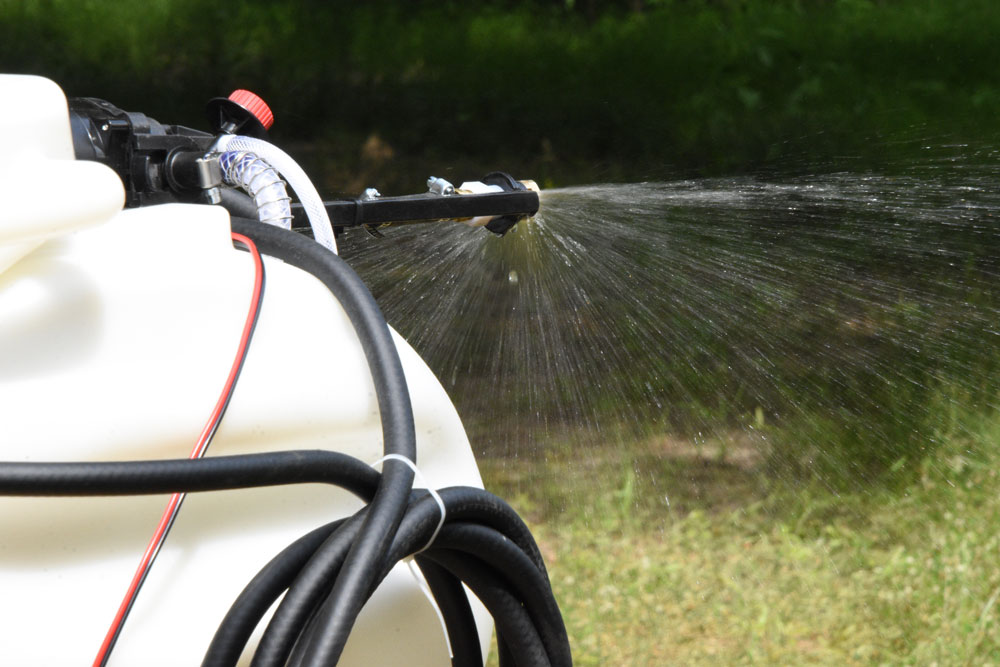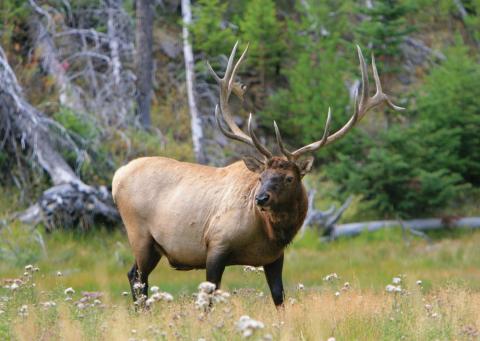Moriah Boggess, Graduate Research Assistant, MSU Deer Lab
Whether you are a die-hard wildlife habitat manager who manipulates native vegetation to increase biomass for deer, or just a weekend warrior who wants to plant a food plot for killing deer, herbicides can work for you. They are very effective tools at killing or prohibiting growth of unwanted plants in areas where they are applied. As useful as herbicides are to deer hunters and managers, beginning to use them may seem daunting as it seems there is plethora of complex herbicide terminology surrounding them and there are a thousand different herbicide options. Here, I want to break down herbicide terminology and make the language surrounding these chemicals more understandable!

Trade Names
First, I want to clear the air when it comes to herbicide names and labeling. Folks generally refer to herbicides in two different ways. The first is by the herbicide trade name such as “Roundup.” The other name for Roundup, or the active chemical ingredient within, “glyphosate.” While Roundup is used as a household name for glyphosate, it’s worth noting that many managers use generic brands of glyphosate that work just as well as the Roundup brand.
Most other herbicides also will have multiple names between manufacturers, so it is best to just refer to them by their chemical name (i.e. glyphosate, imazapyr, triclopyr, metsulfuronmethyl, etc.), as this cuts down on confusion and quickly allows others to know what herbicide chemical you are referring to.
Labels
I will not go into great detail on labels, but no herbicide discussion would be complete without mention of these vital information sources. Every herbicide jug will have its own “label,” and the label conveys all the information you need to know about the legal use and application of the active ingredients in your herbicide.
While these labels may vary slightly between manufacturers, they all contain the pertinent information for the safe use and application directions for the herbicide chemical. Reading the herbicide label before you begin use is essential, as the label provides you with a list of the PPE’s (Personal Protective Equipment) you should wear while applying the herbicide, plants controlled, application methods, and application amounts needed for successful applications. You must read this label to know where the herbicide can be safely applied, possibly when it should be used and how it should be used to achieve your objectives.
Classifications
There are two very broad categories that herbicides fall into, broad-spectrum and selective. “Broad-spectrum herbicides” are those that are made to kill every type of plant they are applied onto/for. The best example of a broad-spectrum herbicide is glyphosate, and this herbicide is used widely to kill “weeds” and any kind of non-desirable plant.
I must note that glyphosate will not kill every single plant out there. Some areas have now developed glyphosate resistant plants like horseweed and pigweed that are not affected by this herbicide; however, glyphosate will kill most grasses and forbs with few exceptions.
“Selective herbicides” are those that are designed to kill only certain types of plants and leave others unscathed. Examples include 2,4-D, which kills forbs and doesn’t kill grasses, and clethodim, which kills grasses but does not affect forbs. Each selective herbicide has a different mode of action that only affects the plants in certain groups, like the dicots (forbs/trees) or the monocots (grasses), while not affecting plants in other groups.
A third category of herbicide, that is somewhat a mixture of the two main classifications, is a “broad-spectrum-selective herbicide.” These herbicides will kill both forbs and grasses but will not affect all species of each group. A great example is imazapyr, which is commonly used in pine plantations. This herbicide will kill most hardwood trees and many forbs, however, it will not kill legumes or blackberry, making it an excellent choice for controlling hardwoods while still retaining some native forbs for wildlife value.
Application Timing
Herbicides are further broken down by their time of application and when they will actively prevent plant growth or kill growing plants. The two main categories focused on application of herbicides are; the “post-emergent” and “pre-emergent” herbicides. Glyphosate is an easy example of a post-emergent herbicide, as it has the potential to affect only those plants whose leaves it comes into contact with. So, it has no residual soil activity and, in fact, as soon as it comes into contact with soil it is inactive.
Pre-emergent herbicides are applied over the soil and will prevent the plants that they control from successfully germinating and emerging from the ground. Pendimethalin is a pre-emergent herbicide that is often used in sunflower fields and other food plots as it will prevent the germination and growth of problematic weeds for months after application, allowing the sunflowers or other crops to grow without competition.
Surfactants
When you are just beginning to use herbicides you probably won’t need to worry about surfactants as glyphosate herbicides commonly contain surfactants pre-mixed in the solution. However, as you begin using more specialized herbicides you will find that many of them require a surfactant be mixed with them before they are applied.
The surfactant acts as a bonding agent to reduce surface tension and make the herbicide stick to the leaves of the plant you are treating so that it will be absorbed by the leaves. There are two basic types of surfactants, ionic and non-ionic, but I advise choosing non-ionic surfactant as it will not burn the leaves of planted forages you wish to keep, like when you are spraying grass in a clover food plot.
Go Buy Some Herbicide
Many people first feel uncomfortable when approaching herbicide use. Maybe it’s that they don’t know what various herbicide can do, or how to how to calibrate their sprayer, simply how to apply the herbicide. Regardless, the best way to learn is to roll up your sleeves and get your hands dirty. So, after this brief overview of herbicide terminology, I encourage you to give some different herbicides a try. Start with a basic broad spectrum herbicide like glyphosate and transition into more selective ones. They can mean the difference between a property overrun with invasive plants or one with quality native food, cover, and well-maintained food-plots. The choice is yours!




























